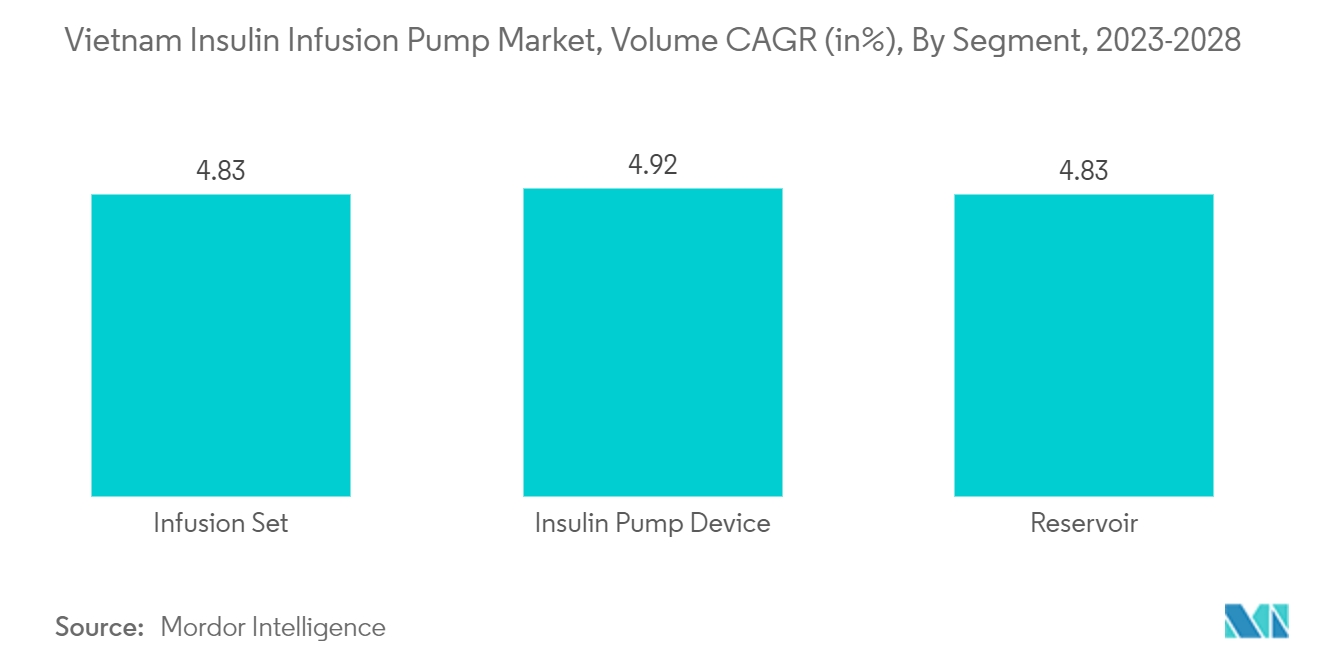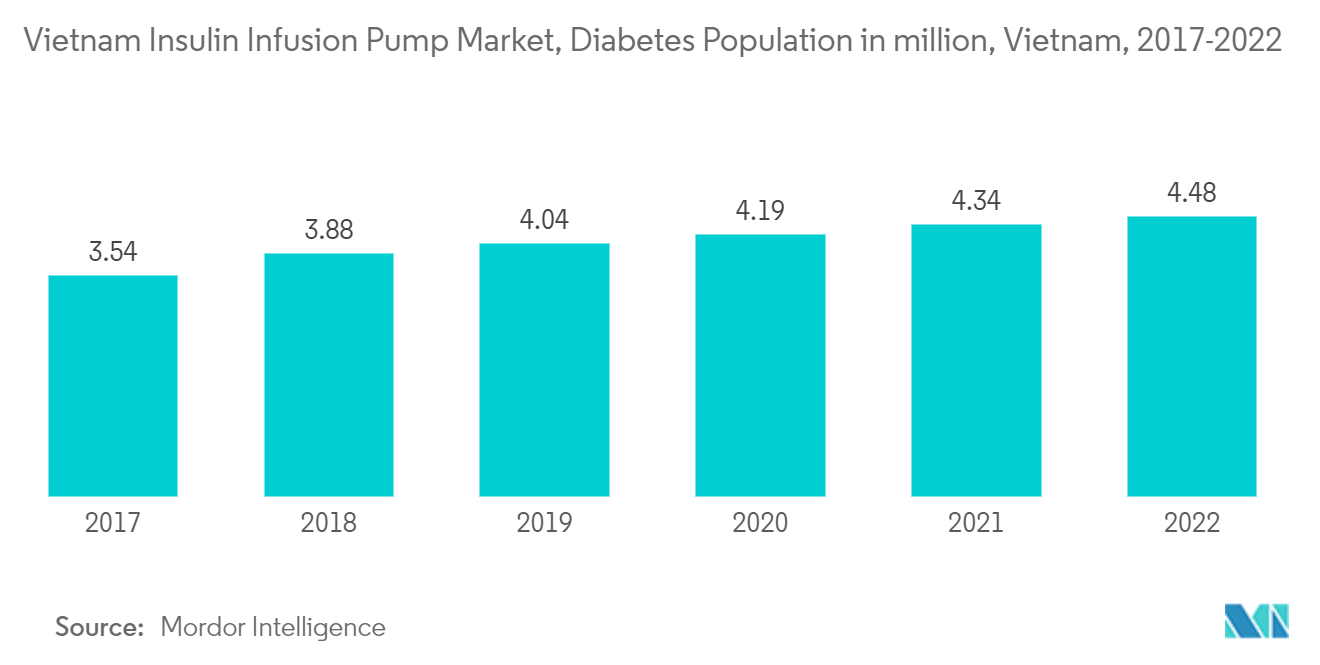Market Trends of Vietnam Insulin Infusion Pump Industry
Insulin Pump is Expected to Witness Growth Over the Forecast Period
An insulin pump is a device that automatically distributes insulin on a continuous or as-needed basis. The pump is modeled after the human pancreas. The insulin infusion pump can be used instead of the standard regimen of daily injections or an insulin pen. Insulin pump treatment is a well-known insulin delivery technique for people with type 1 diabetes (T1DM). Pumps are a recognized, time-tested treatment alternative for T1DM patients of all ages, providing near-physiological insulin administration when the pancreas does not make insulin.
There are also pump variants with remote controllers that allow parents to suspend or bolus insulin from a distance while their child is playing or eating. Unlike injections, insulin infusion pumps prevent big fluctuations in blood glucose levels, cause less discomfort, and dispense more precisely.
The benefits of insulin pumps over traditional delivery systems are projected to drive market growth. Continuous subcutaneous insulin infusion (CSII, also known as insulin pumps) and continuous glucose monitoring systems (CGMs) have significantly improved patient care and quality of life and are commonly utilized in the ambulatory context. This technology is increasingly being employed in the healthcare setting. Health insurance was introduced in Vietnam more than ten years ago; however, the coverage remains limited. Vietnam is classified as a low- to middle-income country, with a GDP per capita of approximately USD 4310.
Consequently, the cost of diabetes treatment imposes significant financial pressure on patients' families. Compared to the expenses associated with managing other chronic conditions like infections, cardiovascular diseases, and kidney diseases, diabetes drugs targeting human cytomegalovirus (HCMV) are relatively affordable. The aging population in the country has strained both the healthcare system and social security regulations and services. Therefore, the government needs to implement new policy initiatives to alleviate the financial burden of diabetes treatment and enhance healthcare affordability. Vietnam aims to have universal health coverage and has decentralized health management to lower levels in the country's administrative structure.

Rising diabetes prevalence in the country is anticipated to boost the market studied
Diabetes, a condition that is becoming more prevalent in Vietnam, is strongly associated with obesity, shifts in nutritional patterns, and various cultural changes. As individuals grow older, the incidence of diabetes tends to rise. Vietnam is on the verge of confronting an aging population, which, coupled with the improved treatment options allowing people with diabetes to live longer, is projected to increase healthcare expenditures.
Research on the financial toll of diabetes in the United States found that expenses had grown despite efforts to decrease unnecessary hospitalization. This indicates that medicines in Vietnam must be broadened to change the trend or prevent the growth in diabetes expenditures. However, considering that Vietnam is also dealing with other noncommunicable illnesses that compete for resources in an already overburdened public healthcare budget, significantly expanding budget allocation and resources to address the issue is impossible. Problems grow increasingly common as people age. The aging population that Vietnam will soon face, as well as people with diabetes having longer lives due to more efficient treatment options, are expected to result in increased costs.
According to research on the financial toll of diabetes in the United States, costs have risen despite attempts to reduce needless hospitalization. This suggests that treatments in Vietnam should be expanded to modify the trend or avoid the increase in diabetes costs. However, given that Vietnam is also dealing with other noncommunicable diseases that compete for resources in an already overloaded public healthcare budget, significantly increasing budget allocation and resources to address the issue is impossible. Despite a large increase over the preceding 10 years, particularly in the last five, Vietnam still has a low obesity rate. These gains corresponded with an increase in malnutrition, suggesting that in Vietnam and other developing nations, over- and undernutrition issues coexist.
Furthermore, most T2D patients have a BMI of 23 kg/m2, but their adiposity has increased, as demonstrated by a rise in WHR and connected to chronic overconsumption of high glycemic index foods. Because of the rising obesity incidence, increasing hereditary risks for type-2 diabetes, and an increasing number of Type-1 diabetes patients, the insulin infusion pump industry is expected to expand further.


